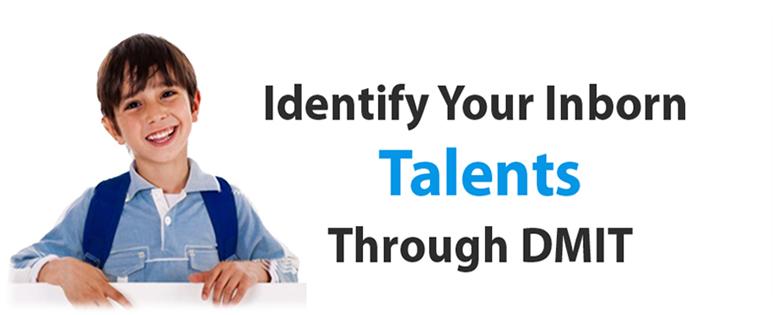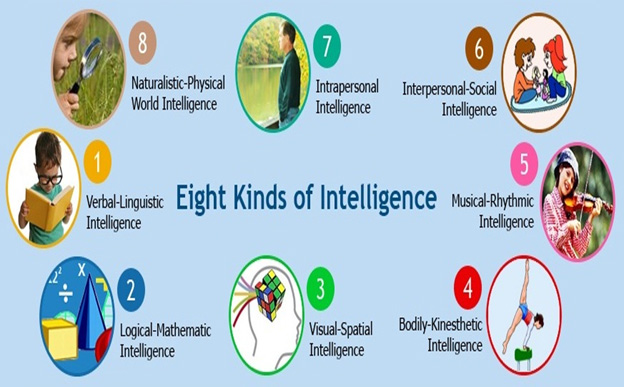
Brain Rider
What is DMIT (Dermatoglyphics Multiple Intelligence Test):
DMIT is an abbreviation
of Dermatoglyphics Multiple Intelligence
Test. Dermatoglyphics is the scientific study of ridged
skin patterns found on fingers, palms, toes and soles. These
patterns are formed during the fetal development stage, 13 to 19
weeks. Through research, it has been proved that ridged skin
pattern formations are controlled by chromosomes, and are
influenced by polygenetic inheritance.
Anatomically the human hands
dominate all other organs in terms of relative importance. This is
why the brain dedicates the majority of approximately two hundred
million nerve endings to the hands. In other words, the hands are
sources of physiological and psychological information of any
individual. As per the scientific researches it is a proven fact
that there are no two identical fingerprints. These fingerprint
patterns remain the same during the lifetime and even after until
the complete decomposition of body takes place.
Centuries of study and research
works has enabled development of Dermatoglyphics science. This
science in coordination to the Multiple Intelligence Theory of Dr.
Howard Gardner has developed an accurate means to provide latent
information of any individual with the help of fingerprint study
and analysis. This method of analysis is known as Dermatoglyphics
Multiple Intelligence Test (DMIT).


Why DMIT
DMIT is recommended to Everyone whether you are student, working personnel, Parent, Teacher or In a relationship, Counselling is required in each part of Life to live a better future. This is done only if you can identify and overcome your strengths and weekness.
Benefit of DMIT:
Initially Know innate strength and weakness
Enhance learning experience with preferred learning styles
Personalize academic and extracurricular programs
Minimize time and financial commitments on unnecessary courses
Reveal hidden talents
Build confidence
Improve friendship & family relationships
Makes academic and career choices easy

SCIENTIFIC DATA
Since 1823, scientists have discovered that fingerprints and innate intelligences are related. Through medical researches, it is found that fingerprints are formed during the 13th to 19th prenatal week. The neocortex is developed during the same period as well.
This principle has been verified by many researchers and it has been published in various literatures as well. According to prime genetics research sector in China, fingerprints are formed during the 13th to 19th prenatal week.Fingerprints are invariable throughout the lifetime, unless some form of disturbances are introduced during the development stage that alter genetic composition.
From then onwards, scientists integrated genetics, embryology, dermatoglyphics and neural science with the theory of multiple intelligences. With that, a person’s personality and talents can be analysed and classified accordingly.
According to Sunday Times, several scientist from Barcelona University studied the fingerprints of hundred of students and concluded that fingerprints reflect intelligence. Intellectually disabled people usually have fingerprints that are substantially different than that of a normal person.
The scientist discovered that among the hundred of students studied, the intellectually disabled children have fingerprints that have more arches and circular patterns. Besides, their palm prints have more abnormal patterns than their normal counterparts. Scientists commented that the Simian ridge found across the palm is most related to a person’s intellect.
Jinzhou family planning research centre
achieved new progress on hand print
research
On the morning of 30th
April, Jinzhou family planning research center, with the support
from the city board of education have collected hand prints on 850
students from all 8 schools in the city. These students excel in
academics, sports, arts and other fields as well. This is a
continuation of the center’s similar research on children with
special needs and their parents last year. This research will
provide families with the theoretical basis of children’s
education. Qufu Normal University, Liu HongZhen Qufu
273165
Abstract: This research
applies the Combined Ravens Test by Li Dan et al on 767 primary and
secondary students ranging from 8 to 13 years old. This test
provides us with information regarding their intellect and
fingerprint. Effectual results total up to 723 sets. Multivariate
regression, multiple stepwise regression and other related methods
were used to analyse the correlation between intellect and
fingerprint patterns. The results show that intellect and the atd
angle, the number of a-b inter-ridge pattern and bow-type pattern
yield no significant correlation. Higher level of correlation is
detected for Wd, Lr, SC, I3 and I4ridges. With that, the regression
equation between Lr, I3 and I4 is deduced and poses huge benefits
for subject choices for young children.
DERMATOGLYPHICS VS MULTIPLE INTELLIGENCE
The development of fingerprints and the human brain is synchronous, between the 13th and 19th prenatal week. Through clinical trials, the fingerprints and multiple intelligences are absolutely related. Dr. Howard Gardner discovered that multiple intelligences are correlated to specific regions in the neocortex. This enables dermatoglyphics to identify the presence and magnitudes of these multiple intelligences at the early stages of childhood development. Equipped with this invaluable information, our children will have the competitive edge in identifying and enhancing their multiple intelligences.
Linguistic / Verbal
Intelligence
Naturalistic
Intelligence
COMMUNICATION CHARACTERS
|
Cognitive
|
|
|
|
|
|
|
Affective
|
|
|
|
|
Reflective
|
|
|
|
|
|
|
Critical
|
|
|
|
|
Brain Development
Child's Brain Development during fetal stage
These nine months will be one of the biggest journeys of your life, but also one of the most challenging. Here your thought process and outside environment will play important role in the development of the brain of your child. The thought process of your child will be a reflection of your thought process during pregnancy. From healthy brain development of your child to psychological support, get advice from experts.
Toddlers (0-3 Years)
From 0 to 3 years of age, emotional bend of a child starts to grow quickly. As brain's neuron activity is quite high at this stage so, it becomes mandatory for the parents to know their child potential as early as possible, so that they can make smart and easy decisions on parenting style and educational methods. Get advice from our experts on best parenting style for your child
Children (4-12 Years)
From 4 to 12 years of age, the brain
begins to prune the excessive synapses in an attempt to get
organized and eliminate what is not necessary. At this age,
children are curious to learn and they can absorb more than they
will when they grow older. Discovering the learning styles and
areas of intelligence at this age gives a clue on what courses and
activities they should spend more time on. From activity selections
to improvement of overall brain health, get advice from our
experts.
Teenagers (13-25 Years)
The Teenage years consist of more aggressive pruning as the brain begins to specialize and build an identity. Discovering personality type, neuron distribution and learning styles of your child at this age can better enhance one's learning experience. Our experts will guide you in subject and educational stream selection which in turn will help you save your time, effort and money wasted over irrelevant courses. In short we will help you find the "Right Path" for your child
Adulthood ushers in bit of pruning plateau, where some connections are diminished and others are enhanced. Understanding your child's are of intelligence, at this stage will help them grow personally and professionally. Understanding more about self can help them take better decisions and communicate better thus will ease the process of building up better relationships
Adulthood ushers in bit of pruning plateau, where some connections are diminished and others are enhanced. Understanding your child's are of intelligence, at this stage will help them grow personally and professionally. Understanding more about self can help them take better decisions and communicate better thus will ease the process of building up better relationships
ike other manuals, Manual of a brain is a book of instructions to learn about your brain thought process and understand the best scenario/conditions in which it can operate at maximum efficiency at the easiest possible
Leave us a Message
Copyright 2015 owned by Aura Igniting Minds | Website Designed by Websea.in Web Solutions | www.websea.in